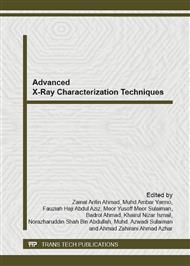p.224
p.230
p.236
p.241
p.246
p.252
p.257
p.263
p.268
Investigation into the Metal Oxide Surge Arrestors' Failures
Abstract:
Metal oxide surge arrestors (MOSA) are commonly used in the electrical power system to protect the insulation from the damaging effect of lightning. This paper presents the damage characteristics and possible root cause of two exploded ZnO type arrestors. Both failures were not caused by lightning surge. They had degraded due to moisture ingress, leading to contamination and corrosion, accelerating thermal runaway effect in the ZnO elements and eventually caused early voltage breakdown under normal operating voltage. This indicated an inadequacy in the sealing components.
Info:
Periodical:
Pages:
246-251
Citation:
Online since:
December 2012
Authors:
Keywords:
Price:
Сopyright:
© 2013 Trans Tech Publications Ltd. All Rights Reserved
Share:
Citation:


